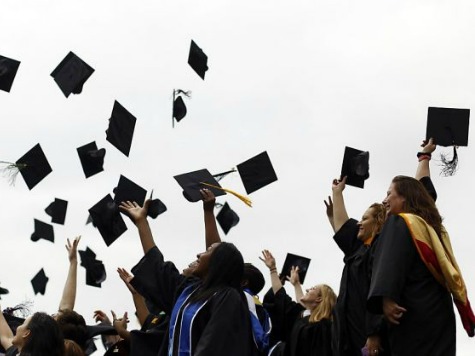The Los Angeles Times reports that, for the first time in California history, the high school graduation rate increased to over 80%, rendering the state on par with national averages. It is unclear if increased rates are due to lower standards.
According to the 4th annual report that tracks students from the time they enter high school, minorities continue to lag well behind in graduation rates. However, they showed improvement, with Latinos increasing their percentage by 1.7% and African Americans climbing 1.9%. Those students who are just learning English graduated at a rate of 62.7% but dropped out at a rate of 21.9%.
State Superintendent of Public Instruction Tom Torlakson is optimistic with the positive upward trends and believes things will continue to improve as the state moves more to a system that apportions money to schools with disadvantaged students. “There’s some good news, but there’s a lot of work to do in front of us,” he said. “We can — we must do better to help all our students graduate.”
John Deasy, who presides over the Los Angeles Unified School District-the second-largest school district in the nation-is happy with the gains that his district has made. LAUSD upped its high school graduation rate by 1.4 % to 67.9 %. One major reason for the increase in graduation has been the district’s ban on suspension of students for “willful defiance.” According to the LA Times, the ban prevents schools from suspending students for disobeying school rules and mouthing off in class.
The ban seeks new alternative methods of discipline to deal with recalcitrant behavior. Opponents of the ban argue that it gives a “free pass” to students and doesn’t adequately deter bad behavior or hold them accountable.
“Considering all the challenges we have in L.A., I’m very pleased and proud,” Deasy said.
Nationally, since 2006, high school graduation rates have improved to 81% from 73% according to the National Center for Education Statistics at the U.S. Department of Education. The statistics also demonstrate that minorities are behind, as seventy-six percent of Latino students and 68% of African American students graduated.
Daniel J. Losen, director of the Center for Civil Rights Remedies at UCLA, believes that the lower results for minorities is proof we need to increase federal funding to make sure that all students are given equal opportunities.
“We still have many school districts where it looks like apartheid in America,” he said. “It’s going to require more than the contributions of the private sector and the competitive grants of the federal government.”

COMMENTS
Please let us know if you're having issues with commenting.